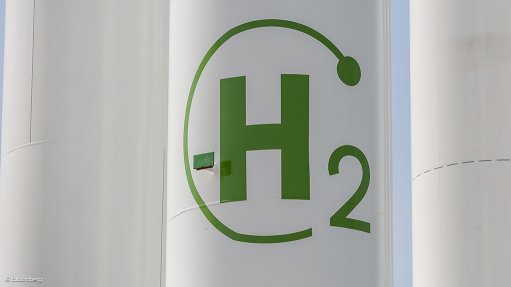GM’s SA unit begins new bakkie production, still hunting car export prospects
Production of the new-generation Isuzu KB pick-up has started at General Motors South Africa’s (GMSA’s) Port Elizabeth plant, with assembly for the sub-Saharan Africa export market kicking off in July or August, says General Motors (GM) Africa and GMSA MD Mario Spangenberg.
He says the new Isuzu will be exported to 46 countries in sub-Saharan Africa, with GM exploring export opportunities in the North African market as well.
Exports of left-hand- and right-hand-drive Isuzu KBs are set to follow the failure of a proposed Spark hatchback export programme for the local arm of the US car manufacturer, owing to what Spangenberg terms “cost issues”.
He says that while the Spark can be produced in South Africa at a fairly similar price tag to South Korea, for example, the additional logistical costs of bringing the locally made Spark to markets such as Australia proved prohibitive.
GMSA is still hunting viable export markets for the Spark.
GMSA planning VP Ian Nicholls adds that GMSA will produce 7 000 Sparks this year, with the manufacturer betting on the latent potential of the entry-level car in the local market to grow its numbers.
Initial Spark production volumes are expected to be 15 000 units a year, of which 50% will be exported to New Zealand, Australia and other right-hand-drive markets in the Asia-Pacific region. “Our export history in South Africa has been miserable,” ackowledges Spangenberg.
GMSA exported 1 000 vehicles into Africa last year. The local plant produced around 45 000 vehicles at its Port Elizabeth site in 2012.
Spangenberg is hopeful that the Isuzu export programme will prove more successful than the Spark programme, as the vehicle made in South Africa is specially adapted for the African market.
“We cannot live on 1 000 export units.”
Nicholls notes that the South African-made KB differs from the bakkies made in Thailand and Japan, especially in terms of ride-handling and suspension.
Indicative of the adaptations made for Africa is that the local content of the vehicle, with the engine included, is around 40%. It is 20% on the Spark.
Isuzu production also has much potential for expansion, says Nicholls, as it will be the first time that GMSA will add left-hand-drive markets to its production repertoire.
There are only 14 right-hand-drive markets in Africa.
Nicholls regards Toyota’s Hilux as the Isuzu’s main competitor in the African market.
Energy, Labour Challenges
Spangenberg says GMSA will “not hit” the 50 000-unit-a-year production target set under government’s Automotive Production and Development Programme (APDP), but notes that the manufacturer will still qualify for incentives under the programme as the APDP allows for ramp-up and ramp-down phases, such as currently seen with the Isuzu project.
He adds that there are a number of “red flags” for South African vehicle manufacturers at the moment, especially as competing auto-building destinations are working to keep the country from becoming a major export hub in favour of their own assembly ambitions.
He says South Africa needs a much more stable labour environment, while the country has also moved from a cheap energy producer to being one of the world’s most expensive energy suppliers.
South Africa also needs to work hard to offset its geographic dislocation in terms of the rest of the world, while a sharper focus on education is required.
Spangenberg adds, however, that GM is positive on the outlook for the African market as a whole, as it is the last frontier remaining in the world, with South Africa the most suitable base from which to serve this market.
GM sold 180 000 new vehicles in all of Africa last year, up 17.5% from 2011 numbers.
The total market for new vehicles on the continent is currently around 1.5-million vehicles, with the potential for this to grow to two-million by 2017, and three-million vehicles by 2022, believes Spangenberg.
Nicholls notes that any serious competitor in Africa needs to have a one-ton pick-up in its arsenal, as well as a B- or C-segment sedan.
He believes that the KB will do well in the high-potential markets of Nigeria, Ghana, Angola, Kenya and Zimbabwe.
Comments
Announcements
What's On
Subscribe to improve your user experience...
Option 1 (equivalent of R125 a month):
Receive a weekly copy of Creamer Media's Engineering News & Mining Weekly magazine
(print copy for those in South Africa and e-magazine for those outside of South Africa)
Receive daily email newsletters
Access to full search results
Access archive of magazine back copies
Access to Projects in Progress
Access to ONE Research Report of your choice in PDF format
Option 2 (equivalent of R375 a month):
All benefits from Option 1
PLUS
Access to Creamer Media's Research Channel Africa for ALL Research Reports, in PDF format, on various industrial and mining sectors
including Electricity; Water; Energy Transition; Hydrogen; Roads, Rail and Ports; Coal; Gold; Platinum; Battery Metals; etc.
Already a subscriber?
Forgotten your password?
Receive weekly copy of Creamer Media's Engineering News & Mining Weekly magazine (print copy for those in South Africa and e-magazine for those outside of South Africa)
➕
Recieve daily email newsletters
➕
Access to full search results
➕
Access archive of magazine back copies
➕
Access to Projects in Progress
➕
Access to ONE Research Report of your choice in PDF format
RESEARCH CHANNEL AFRICA
R4500 (equivalent of R375 a month)
SUBSCRIBEAll benefits from Option 1
➕
Access to Creamer Media's Research Channel Africa for ALL Research Reports on various industrial and mining sectors, in PDF format, including on:
Electricity
➕
Water
➕
Energy Transition
➕
Hydrogen
➕
Roads, Rail and Ports
➕
Coal
➕
Gold
➕
Platinum
➕
Battery Metals
➕
etc.
Receive all benefits from Option 1 or Option 2 delivered to numerous people at your company
➕
Multiple User names and Passwords for simultaneous log-ins
➕
Intranet integration access to all in your organisation


















